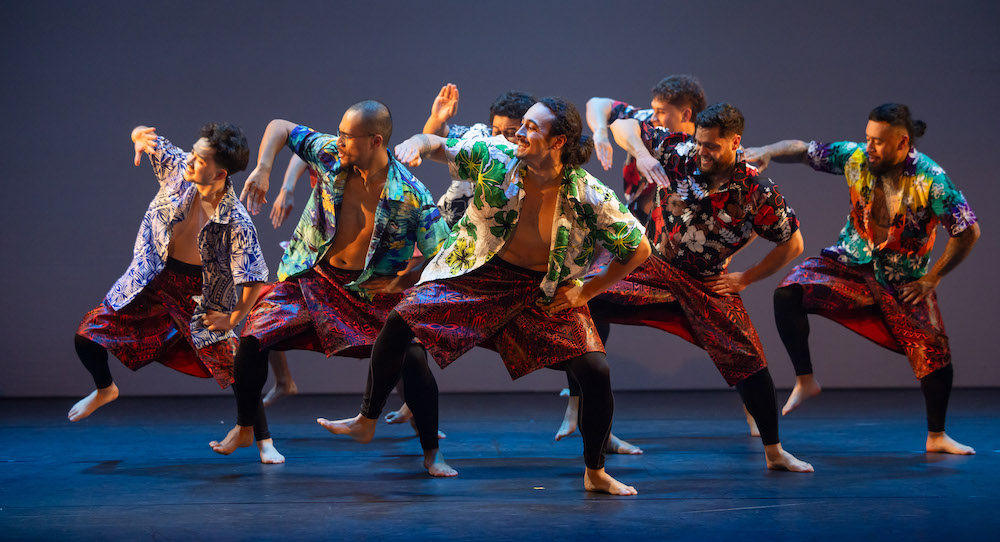Drama Theatre, Sydney Opera House, Sydney.
29 August 2024.
New Zealand/Aotearoa’s Fresh Movement Collective (FMC) brought its poignant, poetic and explosive dance theatre show MĀUI to the Sydney Opera House this August. A company of 30 performers from a variety of Pacific island nation backgrounds, told their collective origin story in the folklore narrative of the demigod Māui. Māui has a legendary and heroic story, one that is a very important part of the ancient history of the islands, through his birth, life and epic journey across the sea, guiding his people across the waters to populate what we now know as the Polynesian nations including Hawaii, Tahiti, Samoa and New Zealand.
A passionate and energetic show, MĀUI is a celebration, using dance, theatre, media, music and song, and FMC takes us on a narrative journey, which weaved in a strong advocacy statement toward respect for culture. The dance forms were a mix of Polynesian folk, contemporary dance, capoeira, and various hip hop forms. It was a rhythmical, energetic, inspiring and insightful journey this delightful crew took us on.
The choreography was performed in small and large group sections, some with the entire crew, some with just the women, or just the men, each section bringing light and shade, and a variation of styles which were often merged to create unique movement. Polynesian traditional movement and blocking structures, fused with the lyrical strengths of hip hop, made for choreography that was exciting, robust and sung with the music, which was equally as layered and full of texture. The crew is not a classically dance trained group, so the contemporary dance moments were lacking in the extension and finesse of a traditionally trained dancer of this form, but they did not lack heart, vibrancy and performance quality that meant the lack of technique did not take from the message. However, technical training may have strengthened it further.
Using a mix of humour, storytelling techniques, live music and screen media as the backdrop, with simple costumes that had cultural type patterns on the material, as well as a mix of simple pants and t-shirts, the work focused on the visceral nature of the performers, and their passion for the story they were telling. They did not rely on extensive staging to communicate their message. Their dynamic singing and live music added to the atmosphere with fantastic harmonies that come so naturally to Polynesian native peoples, using some native language elements amongst the English. A point was made to show that language is one of the ways that culture is removed from a people, and this was shown in a creative stepping/rhyme sequence.
This season of MĀUI was the first time the founding members of the FMC crew, Hadleigh Pouesi (Māori/Samoan), Christopher Ofanoa (Tongan/Pakeha), Chantelle Huch (Samoan) and Byron Fa’aui (Tongan/Samoan), have performed together in six years, and the crowd went wild each time one of them entered the stage; the atmosphere in the theatre was electric. This particular work was created/choreographed by Pouesi, fellow founding member Ofanoa, and performers Leilani Elliott, Kimberley Evans and William Rakena.
Although most of the thematic and structural elements of this work oftentimes lacked subtly, missing the crafting elements that usually reign in professional company work, MĀUI was entertaining, educational and a lot of fun. It contained valuable insight into the visceral and innate value of listening and engaging with those who are connected in an ancestral way to this earth we live in, letting their voices be an important part of our dialogue, and their vibrant culture shine. The juxtaposition of joy and struggle that was evident through Māui’s life was a poignant reminder that Māui’s story is intertwined with the Islands and his people. This celebration of his life left the audience and the theatre buzzing, an effect that comes when witnessing something truly profound and authentic.
By Linda Badger of Dance Informa.

















